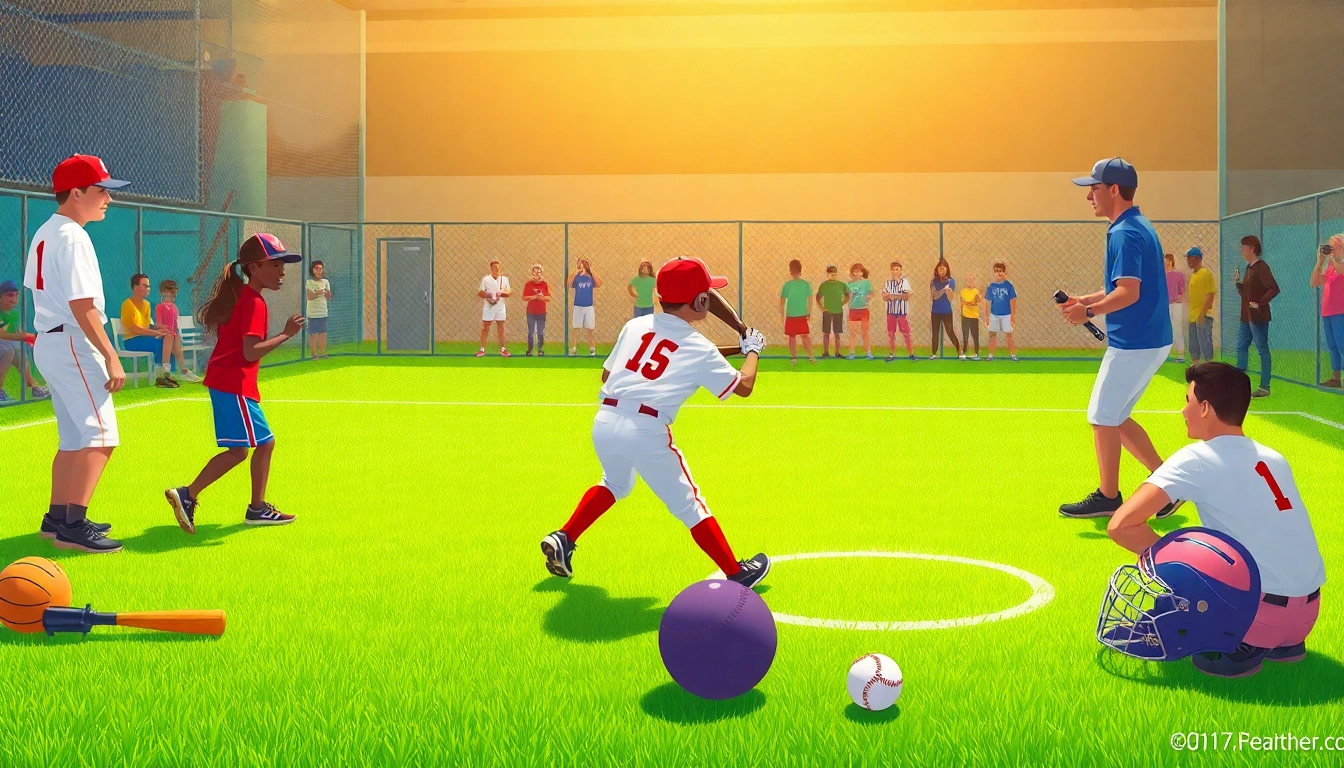Understanding the Concept of Hit Clubs
What is a Hit Club?
“Hit clubs” in the context of sports refer to organized facilities or programs dedicated to enhancing athletic performance, primarily in baseball and softball. These clubs focus on improving hitting techniques through structured training and practice. A hit club often provides specialized coaching, modern equipment, and a community atmosphere that encourages growth and development among young athletes. The aim is to cultivate skills that not only lead to improved performance but also help in building confidence among players. An example of such a program is hit club, which serves aspiring athletes looking to refine their hitting abilities.
The Importance of Hit Clubs in Youth Sports
Hit clubs have emerged as crucial components of youth sports development, particularly in baseball and softball. They offer a structured environment where young athletes can receive tailored training which helps in meeting personal and competitive goals. These clubs address specific skill deficits through focused practice sessions while also providing psychological support, mentoring, and encouragement.
Furthermore, they fill a vital gap left by traditional team sports, which may not provide the individual focus needed for every player. Hit clubs help athletes enhance their gameplay, leading to superior performance in competitive settings such as school tryouts and tournaments.
Variations of Hit Clubs Across Sports
While hit clubs are most commonly associated with baseball, variations exist across different sports. For example, in basketball, there might be shooting clubs focusing on developing shooting skills and techniques. Similarly, soccer academies often provide striking programs dedicated to improving kicking accuracy and power. Each of these “hit clubs” ultimately shares the same goal: enhancing specific athletic skills through concentrated practice and expert coaching.
Key Benefits of Joining a Hit Club
Enhanced Skill Development
One of the most significant advantages of joining a hit club is the personalized skill development offered. Unlike traditional team environments, hit clubs provide tailored training programs that focus on individual player weaknesses and targets. Coaches typically assess each player’s initial skills and develop a training plan designed to push them towards measurable improvements. This level of customization leads to substantial skill development that is often reflected in on-field performance.
Access to Expert Coaching
Hit clubs generally employ coaches who have extensive experience, often at the collegiate or professional level. These coaches not only provide technical training but also mentor young athletes on the mental aspects of sports. The insights gained from seasoned coaches can be invaluable for player confidence and tactical understanding. Access to expert coaching ensures that players are learning the most effective, up-to-date methods for enhancing their performance.
Building a Community of Support
Hit clubs foster a supportive environment that extends beyond skills training. Being part of a club allows young athletes to build friendships and networks with peers who share similar interests and ambitions. This sense of belonging can greatly enhance a player’s commitment to practice and improvement. Additionally, the social dynamics involved in training with peers often leads to a healthy competition that encourages all participants to strive for their best consistently.
How to Choose the Right Hit Club
Evaluating Coaching Credentials
When searching for the right hit club, the first step should always be to evaluate the coaching staff. Research the backgrounds of coaches: their experience, achievements, and coaching philosophies. A club with coaches who have played professionally or at the college level is often a strong indicator of quality. Don’t hesitate to reach out directly to coaches to understand their methods and how they plan to improve players’ skills.
Facility Quality and Equipment Availability
The quality of training facilities and available equipment is another crucial factor. Look for clubs with well-maintained fields, indoor practice spaces, and modern training tools. Facilities should offer areas for batting practice, as well as video analysis tools to help athletes refine their techniques. Ensuring that the club has the necessary resources to aid development will greatly enhance the overall training experience.
Assessing Program Structure and Flexibility
Before making a final decision, assess the structure of the club’s training programs. Programs should not only address technical skills but also incorporate physical conditioning, mental strategies, and game simulations. Additionally, check the flexibility of training schedules to ensure they can accommodate your child’s other commitments. A good hit club will offer a program that can adapt to the individual athlete’s needs.
Best Practices for Training in a Hit Club
Setting Achievable Goals
Setting specific, measurable, achievable, relevant, and time-bound (SMART) goals is essential for any athlete. Encouraging young athletes to define their own objectives within the hit club framework can facilitate motivation and focus during training. Clear goals enable players to track their progress and celebrate milestones, leading to sustained engagement and improvement.
Incorporating Technology into Training
Advancements in technology have brought new tools and methodologies to athletic training. Hit clubs can integrate tools such as swing analysers, video feedback systems, and motion capture technology to give players tangible metrics related to their performance. Using such technology not only helps athletes visualize their performance but also provides data that can be analyzed to fine-tune techniques.
Tracking Progress and Adjusting Methods
Regularly tracking performance metrics is essential for athletes to understand their development trajectory. Coaches should maintain detailed records of player statistics and improvements over time. Identifying trends in a player’s performance can inform necessary adjustments to training regimes. Flexibility in training methods enhances player adaptability and allows for continuous growth.
Success Stories: Real-Life Hit Club Achievements
Notable Athletes from Hit Clubs
Numerous successful professional athletes attribute their foundational skills to early participation in hit clubs. Players who have trained in such specialized environments often show markedly higher levels of performance in youth leagues and schools. Citing specific examples, coaches can inspire current athletes with stories of those who have excelled thanks to their training at hit clubs.
Testimonials from Coaches and Players
Collecting testimonials from current and former club members can provide valuable insights into the effectiveness of the hit club’s training programs. These narratives help to paint a fuller picture of the club’s impact on its athletes, showcasing not just skill enhancements but personal growth stories as well.
Data on Performance Improvements
Leveraging data to demonstrate improvement levels among athletes can validate the success of training programs. This may include statistics on player performance before and after joining the hit club, showcasing enhancements in batting averages, home runs, or overall gameplay metrics. Solid data supports the notion that intensive training leads to tangible results.



